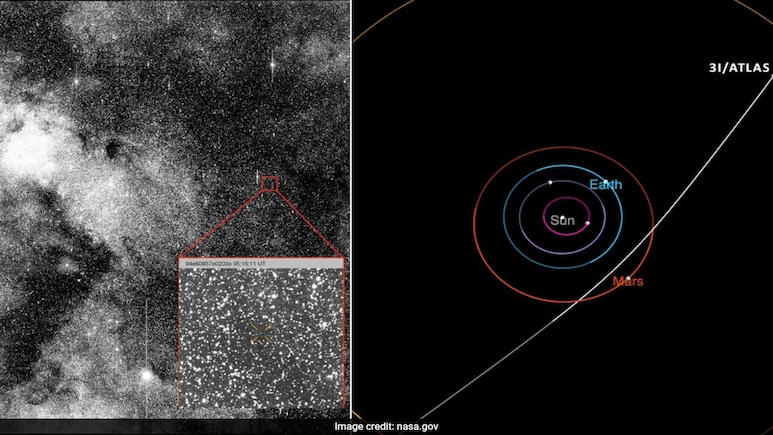
- NASA captured the sharpest image of interstellar comet 3I/ATLAS using Hubble Telescope
- The comet's nucleus size is estimated between 320 metres and 5.6 kilometres in diameter
- 3I/ATLAS travels through the solar system at 209,000 kilometres per hour, a record speed
NASA has shared new details about the interstellar comet 3I/ATLAS, which was discovered last month on July 1 by the Asteroid Terrestrial-impact Last Alert System (ATLAS) at a distance of 675 million kilometres from the Sun.
The US-based space agency announced that a team of astronomers captured the sharpest-ever image of the comet using the Hubble Space Telescope's crisp vision.
According to Hubble, the comet's nucleus size is approximately between 320 meters and 5.6 kilometres in diameter. Earlier, scientists estimated that the size of its icy core is around several miles (tens of kilometres).
Also Read | Scientists Make 'Alien' Diamond On Earth, Harder Than Anything Found In Nature
NASA stated that the new images give fresh insights into the comet, but the solid heart of the comet presently cannot be directly seen, even by Hubble.
The space agency also said that 3I/ATLAS is travelling through our solar system at a staggering 130,000 miles (209,000 kilometres) per hour. It is the highest velocity ever recorded for a solar system visitor.
"No one knows where the comet came from. It's like glimpsing a rifle bullet for a thousandth of a second. You can't project that back with any accuracy to figure out where it started on its path," David Jewitt of the University of California, Los Angeles, science team leader for the Hubble observations, said as quoted by NASA.
Also Read | NASA's Curiosity Rover Spots Coral-Shaped Rock On Mars
Hubble also captured a dust plume ejected from the Sun-warmed side of the comet and a hint of a dust tail streaming away from the nucleus.
"This latest interstellar tourist is one of a previously undetected population of objects bursting onto the scene that will gradually emerge," said Jewitt. "This is now possible because we have powerful sky survey capabilities that we didn't have before. We've crossed a threshold."
Track Latest News Live on NDTV.com and get news updates from India and around the world

